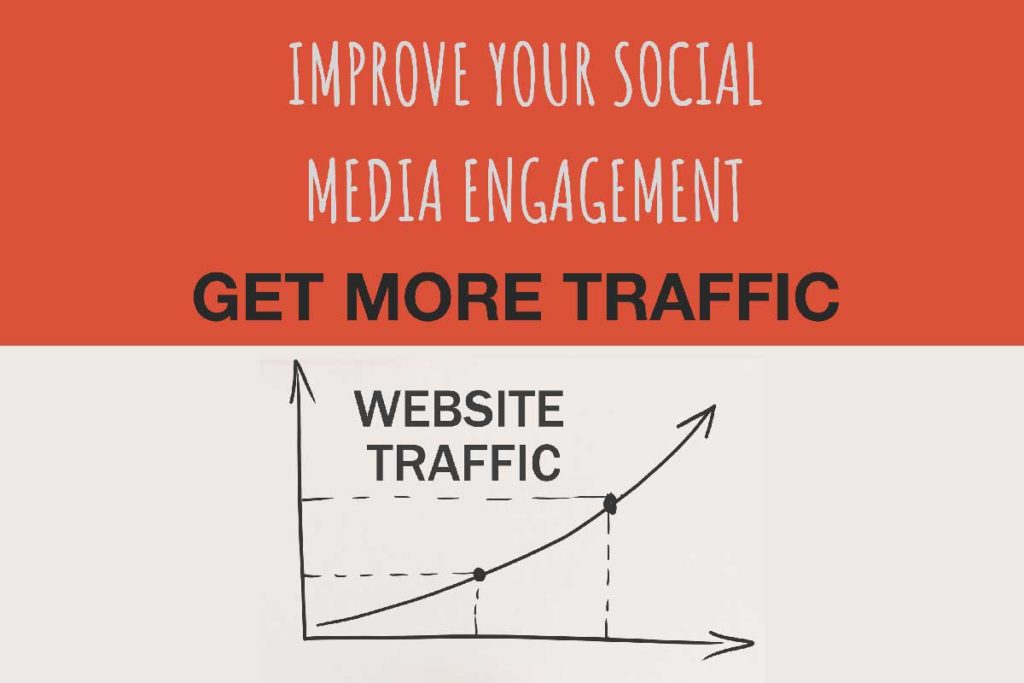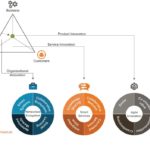Most people want to know how to improve social media engagement. Why?
The chances you are not getting much traffic and in turn, getting sales from social media. Sometimes it can just feel daunting trying to connect with an audience and build up engagement rates.
The truth is that unless people engage with your content you might as well not be writing. That sounds harsh but social media is instrumental in getting brand reach.
In this post you will learn to top ways to improve social media engagement across the main channels: Facebook, Instagram, Twitter and Linkedin.
Table of Contents
How To Improve Social Media Engagement on Facebook

1. Teach, inform, inspire or entertain
Your Facebook audience is not looking for a sales pitch, and they’re not on Facebook because they want to buy.
Although Facebook draws a massive amount of advertising budget it works differently to Google – see my post of Facebook Ads vs. Google Ads.
Instead, you need to recognise that they want to engage with content that helps them to either learn something new, make them smile, make them think, or improve their lives.
To create content that connects with fans, you’ll need to…
2. Get to know your audience
What you find entertaining or inspiring is not always the same as your audience.
When you’re looking to improve social media engagement, it’s understanding your audience that matters.
And that’s difficult unless you really understand who your audience is.
Facebook Page Insights provides a ton of useful information about your audience. Study this information carefully, and look for any unexpected details that could help you create a more meaningful connection with fans.
Use Page Insights to research your audience and determine what kind of content your fans respond to most. Learn what customers content they like as well as photos and videos.
Use that knowledge to talk to your audience about something they care about.
Creating audience personas can also help you understand your followers better. It’s a great exercise to help you focus on your followers’ needs and target your content to those needs.
3. Keep it short
The vast majority of people use Facebook mobile devices—a massive 88 per cent of them.
Facebook statistics show us that people who scroll through their News Feed on mobile devices spend only 1.7 seconds on content.
As a comparison, people browsing on a computer only spend 2.5 seconds per content item.
In both cases that’s not much time for any social media media engagement.
However, there is some good news for those that produce stand out content. People can recall content after seeing it for just 0.25 seconds. But you need to get their attention.
Keep your post short and sweet to capture attention quickly and entice users to stop scrolling and engage.
4. Focus on quality

With people moving through content quickly, there’s no time for sub-par graphics, videos or text.
If you’re running out of original content to post, content curation can be a great way to share quality, informative content that gets your audience excited.
Quality doesn’t have to be complicated, or expensive. In fact, Facebook recommends you keep things simple with a consistent color scheme and recognizable images.
Which leads us to…
5. Use (great) images
Facebook posts that include a photo see higher-than-average level of social media engagement rates. Simple shots work well. Facebook suggests a product close-up or a customer photo.
You don’t need a fancy camera or photography equipment. Mobile phones have good quality cameras and there are lots of apps that you can use to touch up your photos.
Use a small tripod if you need to get a steady shot and you can use devices that allow you to remotely trigger the camera on your phone.
Alternatively, you can use stock photography as an option if you’re not confident in your photography skills.
6. Make a video, or broadcast live
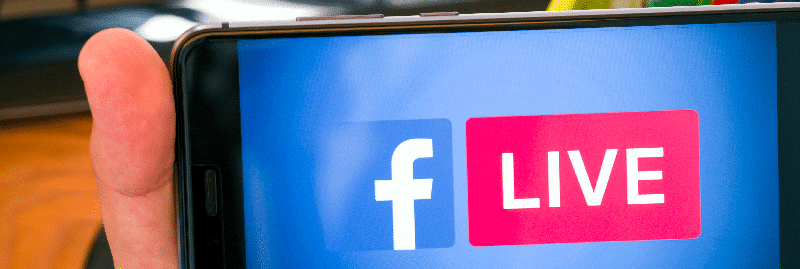
Video posts receive higher social engagement rates than photo posts. Like photography, videography can be simple and inexpensive.
You can use your mobile phone but it does depend on the quality and style of video you want to produce. Keep in mind that vertical video gives you the most screen real estate on mobile devices.
Live videos see the highest social media engagement of all, getting six times more interactions than regular video posts.
Can’t think of a reason to go live? Get creative.
7. Ask a question
An interesting question is a great way to kick off an active comments thread. Here are some ideas to get you started.
- How do you [complete this action]?
- Why do you [like this event or brand]?
- Do you agree with [a notable statement, event, person, etc.]?
- What’s your favorite [fill in the blank]?
You could also ask fans for information about what kind of content they want to see from you. Then, give them what they ask for. This targeted content will inspire even more engagement.
As people answer your question, don’t forget to…
8. Respond to fans
If someone takes the time to comment on one of you posts, make sure to reply. No one likes being ignored, and fans who engage with your posts want you to engage in return.
Make sure you have a team in place to monitor and respond to all comments. Sometimes a simple comment back is all that’s needed. Sometimes more action is required. If someone posts a question, respond quickly and follow up.
If you use Facebook Messenger for your business, get the Very Responsive badge. This shows fans that you respond quickly to fans’ questions and concerns.
9. Test everything

On Facebook, there are lots of opportunities to learn what your fans like, and what they don’t.
The statistics say that video posts get the most social media engagement, but that might not be true for your particular brand. Or maybe your followers just can’t get enough 360-degree video.
Testing is such an important part of refining any marketing strategy. Check out the different AB testing tools you can use for testing your marketing tactics.
10. Be consistent and post at the right time
Since the Facebook News Feed is based on an algorithm, your fans will not necessarily see your content the moment it’s posted. When you post is one of the signals used in the Facebook algorithm. And Facebook itself says that you’re more likely to see engagement if you post when your fans are online.
You can learn when your audience is active on Facebook using Page Insights:
- From your Facebook Page, click Insights at the top of the screen
- In the left column, click Posts
- Click When Your fans Are Online
Times are shown in your local time zone. If your fans all seem to be active in the middle of the night, they’re likely in a different time zone from you. To confirm, click People in the left column, then scroll down to see the countries and cities in which your fans and followers live.
The most important thing is to post consistently, so your audiences come to expect to see content from you regularly. Testing will help you determine how often you should post.
11. Drive traffic from other sources
People who are already interacting with you on other channels are a great way to build engagement. However, unless you make it easy and obvious they might not join follow you across different channels.
Add a link to your Page on other social networks. Link to Facebook from your website and email signature. Include a Facebook plugin on your blog to highlight your latest posts, or embed a post directly in a blog post.
Fans can like the post without leaving your blog, or click the comment button to transfer over to Facebook to join the conversation.
Don’t forget about offline materials. Include your Facebook page URL on your business cards, posters at events, and packing slips.
12. Be active in Facebook groups

Create a Facebook group to get fans involved and engaged. Lots of people, including your potential customers, are members of Facebook groups that they consider to be meaningful. And those meaningful interactions in groups can create brand loyalty and lead to engagement on your Facebook page.
Join other relevant Facebook groups is also a great way to connect with fellow entrepreneurs and thought leaders in your industry.
13. Use Facebook Stories
Facebook Stories, like Instagram Stories, are at the very top of the News Feed. That’s where people start looking and as a result where you can grab their attention.
Use this to post as often as you like, without worrying about overwhelming your fan’s News Feeds.
Because people expect lower quality content on Stories, you can be more personal and in-the-moment to develop a stronger personal connection with followers.
That connection builds the desire to see more of your content. Your audience will check out and engage with the content posted on your page. In an Ipsos survey of stories users commissioned by Facebook IQ, 62 per cent of people said they became more interested in a brand or product after seeing it in a story.
14. Add a call-to-action button
A call-to-action button gives people Facebook engagement options beyond liking, sharing, and commenting.
- Your CTA button can ask viewers to:
- Book an appointment
- Contact you (including through Facebook Messenger)
- Watch a video
- Click through to your website
- Shop your products or see your offers
- Download your app or play your game
- Visit and join your Facebook Group
15. Get verified
People want to know who they’re talking to online. This applies to brands, too. A verified badge shows visitors that you’re the real deal and they can feel safe engaging with your posts.
After all, no one wants to be the one to like or share a post from a fake page misrepresenting a brand.
16. Avoid engagement bait
When you’re hoping for likes and shares, it might be tempting to ask for likes and shares. Don’t do it! Facebook considers this engagement bait and will penalize you by downranking your posts in the Facebook algorithm.
As mentioned above, it’s fine to ask a genuine question or ask your followers for their opinion or feedback. You cross the line when you ask for a comment that doesn’t indicate any real thought or consideration. Here’s are some examples of engagement bait:
17. Boost your Facebook posts
Boosting a post is a simple form of Facebook advertising that allows you to get your post in front of more people, and thereby increase your chances of engagement.
How To Improve Social Media Engagement on Twitter

Imagine standing in a room full of people while presenting a speech. Now keep in mind, this is one of the best speeches you’ve ever given. It’s filled with creative ideas and useful information you know your audience will love. The only problem is…nobody in the room is listening to you.
Now imagine you are publishing content on Twitter. This is the best content you’ve ever produced. Except this time, no one is clicking on the link you provided or even bothering to look at the graphic you’ve designed for it.
This is what the content marketing world likes to call “engagement”. When it comes to using Twitter, your job is to maximize engagement on every piece of content you send out. But how?
1. Use Images To Increase Retweets By 150%
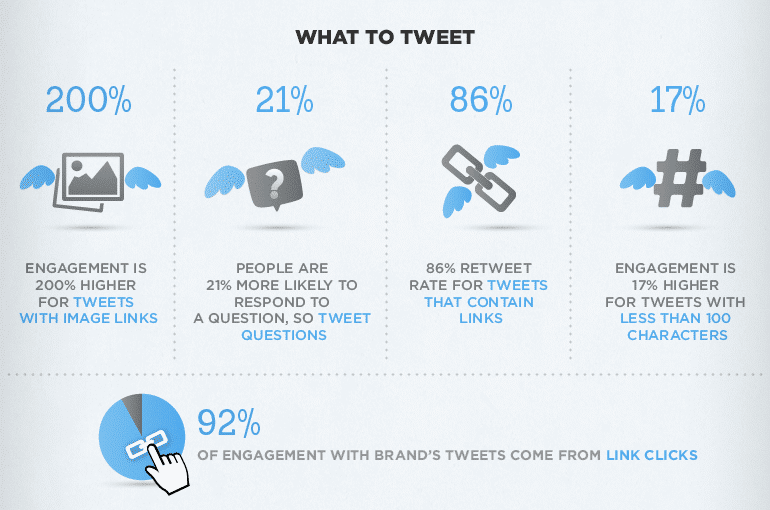
One of the best ways to make your content stand out is by simply adding an image.
Buffer found that sharing images on Twitter increases retweets by up to 200%. Including a large image with a short summary of text on Twitter is more visually appealing than a text-only post.
In fact, research shows that social media engagement on Twitter was 5X higher when an image was included.
- Include an image in every post for 35% more retweets.
- Images can be anything from pictures and screenshots to mini infographics and charts.
- Make sure your visual media is directly related to the content it’s tied with.
2. Use Memes and GIFs To Show Personality
Use memes and GIFs when publishing your content on Twitter. This adds a fun spin to your plain post and will be too irresistible for your audience to scroll past.
Twitter has made it easy to add GIFs by doing all the work for you within the tweet box. All you need to do is choose an appropriate GIF from the drop-down menu or search for a specific genre in the search box.
Memes and GIFs are an extremely popular way for brands to engage their audience. They receive far more likes and retweets than regular images.
- Use real-life pictures of employees to give a more personal feel and to help build the story behind your brand.
- Use GIFs to promote special offers and events.
- Memes and GIFs help you connect with your fans and followers in a new way because they sometimes convey emotions much better than text or photos or even videos.
- Use the correct sizing for GIFs and memes and don’t forget to add a witty caption.
3. Create Twitter Polls To Engage With Followers
People on social media love to give you their opinion. Twitter polls are not just a more interactive way to engage with your audience, they also help you learn about your followers.
It also shows your followers that you care about their opinions, which builds trust and loyalty, further strengthening your brand identity and reputation.
To create a Twitter Poll:
- Open your Twitter page on a web or mobile device, click the Tweet button in the top navigation bar.
- Click the Add poll icon located in the bottom left corner.
- Type your poll question into the main compose box.
- Insert your first poll option into the Choice 1 box, followed by your second poll option into the Choice 2 box.
- Click + Add a choice to add additional options to your poll. You can have up to four options per poll.
- A poll automatically defaults to run for 1 day. You can change the duration of your poll by clicking 1 day and adjusting the days, hours, and minutes. The minimum amount of time for a poll is 5 minutes, and the maximum is 7 days.
- Click Tweet to post the poll.
What to consider when putting your poll together:
- Keep your poll questions short and sweet. Your audience is more likely to respond when you keep your poll simple.
- Ask questions about your services, products, and brand in general. Mix in a fun Twitter poll every now and then about an office debate or what colour to use for your next blog post.
- Create a list of potential Twitter poll questions and post a new poll every week for consistency.
4. Participate In Twitter Chats To Promote Your Brand

A great way to build social media engagement for your brand is to communicate with people who are interested in similar products or topics. Instead of posting Tweets or sending direct messages, you can have conversations using Twitter chats.
What is a Twitter chat? It’s a conversation around one unique hashtag. This hashtag allows you to follow the discussion and participate in it. Twitter chats are usually recurring and on specific topics to regularly connect people with these interests.
Participating in Twitter chats allows you to have real-time conversations with hundreds of different users while promoting your expertise and building your authority on a topic.
Make sure you’re involved with your twitter account every day & sharing content that’s worth looking at.
The goal of joining Twitter chats is to gain interest in your brand from Twitter users who aren’t part of your follower base yet.
- 67% of Twitter users are far more likely to buy from the brands they follow on Twitter.
- Choose a Twitter chat that is relevant and beneficial to participate in.
- Look to leading brands in your industry and reach out to them to co-host with you to expand your network.
5. Host Twitter Chats To Reach A Larger Audience
Host your own Twitter chat. Here are a few key points to keep in mind before jumping into your own Twitter chat:
- Decide on a clear and brief hashtag that represents your brand.
- Choose a day and time that you can consistently hold Twitter chats.
- Come up with an appropriate topic and questions.
Plan and promote your chat via Twitter.
Make sure you choose a topic that is relevant to your audience.
Before you begin your chat, ask people to introduce themselves and where they are tweeting from. Engaging with your participants is the most important part of hosting a Twitter chat. After asking each question, reply to a few responses to remain in the loop.
6. Pin Tweets To Boost Your Best Content
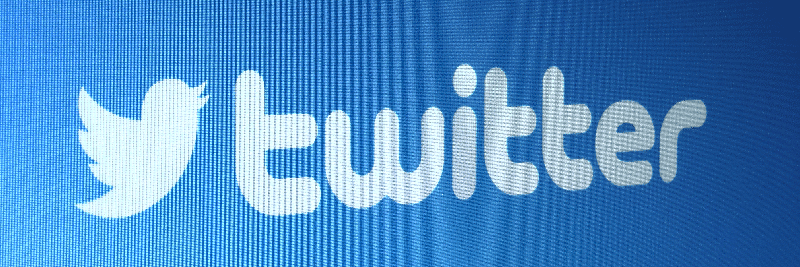
Do you have an awesome Tweet you want all of your followers to see? You can pin tweets to your profile that will remain on the top of your page until you removed the pin.
It’s a simple tactic that produces power results and boosts social media engagement. Just select the tweet you want to be pinned, click the “…” icon, and then click Pin to your profile page.
- Pin a Tweet with an eye-catching image to boost retweets by 35%.
- Add a strong call to action to your pinned Tweet.
- Include a URL in your pinned tweet to receive 86% more engagement.
7. Use Standalone Graphics/Infographics To Share Information
By now, we all know that using images in tweets will increase engagement, but what about adding an image without any links?
A standalone graphic with a small number of statistics on its own can be a powerful way to engage your audience.
Another popular image is to share memorable or motivational quotes.
- Use a graphic with text that gives quick information to your followers.
- Grab small pieces of information from your blog posts to put in your standalone graphic.
- Use tools like Canva to create a standalone graphic.
8. Social Listening Helps Build Loyalty
Research shows that customer emotions become permanent with time. It’s best for an effective intervention to take place as close to the experience as possible.
Baba Shiv, Stanford Professor of Marketing at Stanford’s Graduate School of Business
When users respond to your posts on Twitter or mention your business name, respond quickly. If you don’t, then it’s going to seem like you’re not very active or you simply don’t care.
It’s been found that 72% of people who complain on Twitter expect a response within an hour so it’s your priority to respond as fast as possible.
Many of your followers will have questions that need urgent answers, so it’s important to reach out to them to resolve the issue. Or to simply thank your followers for sharing your content. If you not sure how to respond on social media then follow that link.
- Your followers will be much more likely to post comments if they know that you are reading them and that you will respond to them in a helpful manner.
- Use first names when you are responding. Addressing your followers in this way makes them feel more appreciated—not to mention that people love to be acknowledged. Small gestures like these help to build loyalty.
- If you respond right away, there’s a chance that the conversation will continue since they may still be on your page.
9. Curate Content To Increase Traffic
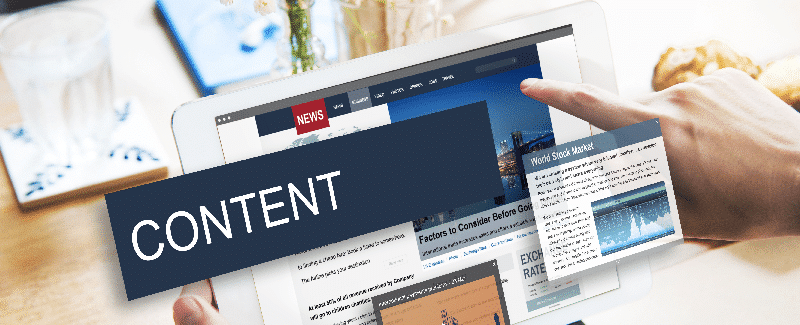
Are you only tweeting your own content?
Sharing the content of others is one of the best ways to show that you’re not all about you!
One report found that 82% of marketers curate content.
Curating content is a widely known tactic because it works. Over 50% of marketers that curate content say it has increased their brand visibility, thought leadership, SEO, web traffic and buyer engagement.
- Find the best content, the content you enjoyed, the content your audience members are sharing and talking about, the content that is actually helpful.
- Connect with influencers. You’re going to be sharing content by the leaders in your industry, opening the doors to communicating with them.
- Plan your curated content ahead of time for consistency.
10. Use Hashtags To Double Engagement
Twitter didn’t invent the hashtag (#), but it made it popular.
Hashtags double social media engagement rates and help users to easily search for a topic or trend on Twitter. They are a great way to join in a conversation already happening or organize a conversation, like a Twitter chat.
Hashtags identify the subject of your content, making it easier for Twitter users to stumble across your page when searching for similar subjects.
- A good hashtag is memorable, unique, and relevant to your content.
- Try not to use more than two hashtags per post to avoid being annoying.
- Always use a hashtag when participating in or hosting a Twitter chat.
11. Use Video in Tweets For A 28% Boost
While images perform better than text, Twitter users love videos. 82% of users watch video content on Twitter.
- You have 10 seconds to win over your followers. According to research by Visible Measures, 20% of your viewers will click away from a video in 10 seconds or fewer.
- Promote and educate your followers about your brand using video. Add in a weekly tip to your page is a sure way to engage with new followers.
- Include people around your office in Twitter videos to give a personal touch to your followers.
12. Use Twitter Ads For Higher Click-Through Rates
If you’re looking for a fast and guaranteed way to boost social media engagement on Twitter then use Twitter Ads. Especially if you don’t have a lot of followers to engage with.
To set up Twitter Ads:
- Choose between promoted tweets and promoted accounts. Promoting tweets will get your tweets to appear in users’ Twitter streams or in Twitter search results. Alternatively, promoting your account will display your username under the“Who to Follow” section in users’ homepages.
- Choose your target audience. Target a specific audience based on demographics and psychographics. Make sure your ads are seen by the right people who would benefit from your brand.
- Create your tweets. Either select from existing tweets in your account or create new ones to promote. Set a daily budget and maximum spend limit before placing it live.
Recent studies have found that Twitter ads consistently deliver higher click-through rates (even higher than Facebook ads).
- Plan ahead by choosing a Twitter ad campaign that fits your brand’s goals.
- Use interest targeting and keywords to target the right audience for the best results.
- Create visually appealing images for your Twitter ads to reach more people and boost engagement.
13. Tweet At The Best Times
The number of people you engage with is directly related to followers viewing your tweets. In order to maximize engagement, you must post at the best possible times.
After doing some research on 10 different studies about the best times to post on social media, studies show a few ways to make every tweet get a little more engagement:
- Wednesdays at 12 p.m. and 5-6 p.m.
- Mondays-Fridays at 12-3 p.m. and 5 p.m.
- Any day of the week from 2-3 a.m., 6-7 a.m., and 9-10 p.m.
Use these times as a guideline. Test out different times and find out when your audience is the most active on Twitter. However, check out Twitter Analytics to see when your specific audience is most active.
14. Use Twitter Cards To Drive Traffic To Your Website
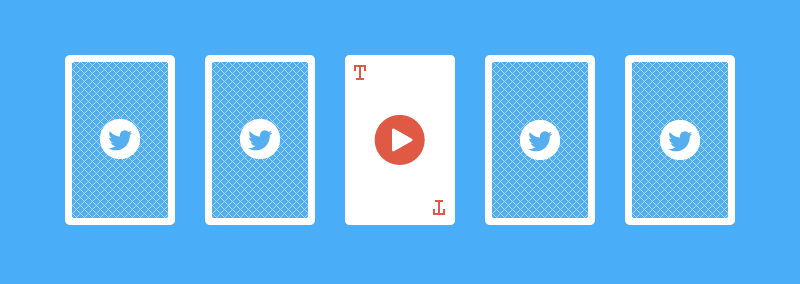
Twitter Cards allow you to go beyond the 140-character limit and attach different forms of media. They add visual interest through images, product info, videos, and other expanded content.
All you have to do to get started with using the feature is to add a couple of lines of code to your site. Refer to our post on Social Media Optimization to get set up.
There are seven distinct Twitter Cards to choose from:
- Gallery cards featuring a number of images
- Single photo cards
- Summary cards which let you post a link with further information
- Summary cards with images
- App cards
- Player cards which showcase videos
- Product cards
Below is an example of a Summary Card which includes a title, description, thumbnail image, Twitter account attribution and a direct link to the content.
- Test different types of cards. Every site is different, and Twitter Card analytics will help you measure which cards yield the most engagement with your content.
- Engage with Influencers. Twitter Card analytics make it possible to determine who is sharing your content with the most velocity – make sure to engage with these accounts to promote further interaction!
- Add a few lines of HTML to your webpage. Users who Tweet links to your content will have a “Card” added to the Tweet that’s visible to all of their followers.
15. Use Emoticons To Increase Favorites By 57%

Consider breaking up the text with an emoticon. Emoticons show a bit of playfulness and adds a bit of personality. In fact, statistics show that the using emoticons will boost the share and comment rate of your posts, and can help increase favourites by as much as 57%.
- Choose one or two emoticons per tweet. “Think of emojis as the ultimate elevator pitch for your business: you have one or two symbols to let people know exactly what value you’re bringing them with every Tweet.”
- Use emoticons when responding to your followers to add a personal touch and show appreciation.
- Emphasize specific parts of your tweet with a correlating emoticon to intensify engagement.
What Twitter Engagement Tactics Work For You?
Analyzing engagement rates allows you to see how much of an impression your brand is leaving on your audience.
Look at engagement as a stepping stone that leads followers to view your website, subscribe to your newsletters, and purchase your product. Without engagement, you will be tweeting to a black abyss. Building a strong relationship with your Twitter followers will bring forth high engagement.
Implement these tactics the next time you post on Twitter and watch your engagement rate skyrocket.
How To Improve Social Media Engagement on Instagram
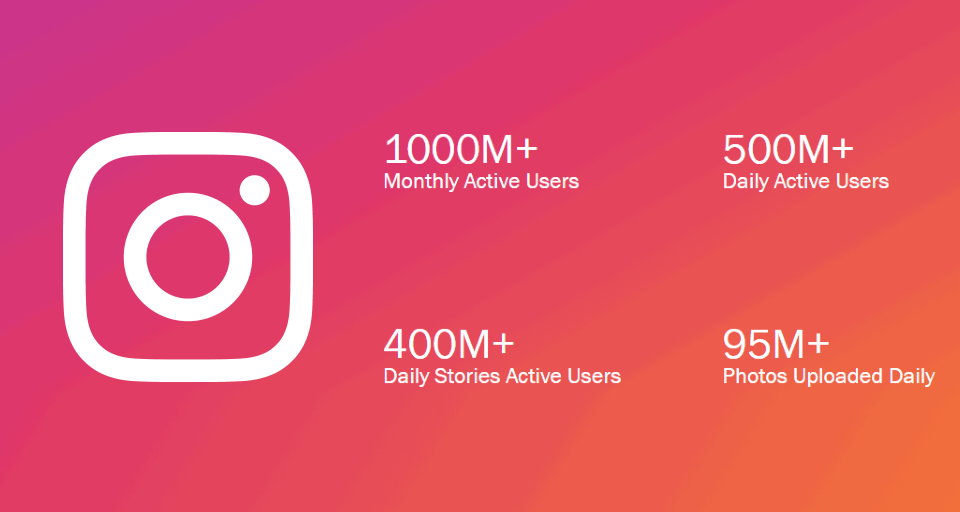
Instagram has continued to expand in 2018, with over 13% of everyone on Earth now using the platform. It also is a huge source of ad revenue, with Instagram ads expected to generate nearly $11 billion in 2019. With figures like that, it’s no wonder that many analysts are starting to see Instagram as the new engine behind Facebook’s growth as a company.
For now, Instagram remains vital for marketers in no small part due to over 1 billion monthly active users with 50% following brands.
According to Forrester, engagement – measured by likes, shares and comments from consumers is massive compared to other social media channels. Instagram boasts a social media engagement rate of 4.21%. That’s 10 times higher than Facebook, 54 times higher than Pinterest, and 84 times higher than Twitter.
1. How often to post
Brands need to be active in order to attract followers and boost engagement rates – but how active?
According to studies, the sweet spot is a consistent 1-2 posts a day.
Recommended post times vary wildly depending on which expert you listen to. Some advocate 8 AM – 9 AM or 2 PM – 5 PM for your first post to even 2 AM for your second. The best way to find out is to test this with your own audience.
Instagram’s analytics tool shows you what times and days your followers are most active.
Identify when your followers are most active and allows you to schedule accordingly, ensuring your posts continue to appear at the top of their feeds.
2. Don’t preach, tell a story instead
Instagram is aimed at being a ‘visual inspiration platform’. As a result, focus on captivating your audience through images and video, not simply preach marketing to them.
To increase engagement rates, become a storyteller.
Offer ‘micro-stories’ via your captions, videos, Instagram Stories and profile. Or try sharing user-generated content that resonates with your brand (see point 15).
For inspiration, follow innovative Instagram storytellers such as Airbnb, Red Bull, Lego and Nike.
3. Make your Instagram branding matter
Clarity, creativity and consistency are essential to building brand awareness on Instagram.
Focus on areas like presenting your profile, creating style patterns that keep your images looking fresh, and mastering hashtag use (see point 8). You should also be interacting regularly with your followers to build up engagement and loyalty.
4. Use the full range of Instagram video formats

A picture may be worth a thousand words, but a video is worth 1.8 million. Instagram recognizes this and gives you a suite of video options for marketers.
Use the power of each video format, from Instagram Stories that can mash up videos and stills into a single ad to standalone 60-second videos.
Consider Instagram Stories’ live video as an option for big reveals about new products or services. Alternatively, use a prerecorded ad to offer up authentic, behind-the-scenes stories to your followers to increase social media engagement.
5. Use Instagram video subtitles and closed captions
Subtitles have become so essential for marketers, enabling core messaging to be delivered on-screen alongside visuals.
Facebook research shows that captioning videos increases average video view times by 12%. Messaging effectiveness is also boosted massively, boasting a success rate of 82% compared to 18% with sound on and zero captions.
Auto-captioning is offered by Facebook (though be sure to check any captioning for errors). Alternatively, you can create your own dedicated captioning file.
6. Take advantage of Instagram’s video ad formats
75% of Instagrammers state that they take actions“like visiting sites, searching, or telling a friend” after being viewing a post. Instagram video formats are an invaluable tool for targeting your audience.
The platform offers three key video formats:
- single video ads offer the opportunity to create up to 60-second commercials
- carousels allow more message real estate by enabling followers to swipe across for additional images or videos.
- Instagram Stories offers a vertical full-screen format where images and videos can be spliced together to create visually-arresting ads.
7. Use GIFs to increase social media engagement
Videos that are 15 seconds or less are more likely to be watched all the way through. Learn how to create and how to post a GIF.
Celebrating its 30th anniversary in 2017, the GIF format is more appealing than photos – GIFs are shared more than either JPEG or PNG formats – and are more cost and time effective than producing videos.
It’s also the medium that clearly inspired Instagram to create its own riff on the GIF – the Boomerang – which records a short sequence of stills before combining and then looping them backwards and forward, ready for upload to Instagram.
The tool has already produced some excellent results for brands who have experimented with the young medium to increase Instagram engagement.
8. Choose the right hashtags
Selecting the best hashtags for your Instagram posts can mean the difference between appearing as a top post or sinking to the bottom of the feed without a trace.
Make your hashtags too generic – think #christmas or #fashion – and your post will face competition from potentially millions of others. Instead, use a mix of trending and industry-specific hashtags to find the best hashtag to connect with your targeted followers.
The number of hashtags you deploy is also critical. While Instagram allows for up to 30, a mass of tags underneath your caption risks looking both untargeted and unprofessional. That’s why 91% of posts by top brands use seven or fewer hashtags to get many likes.
To help decide which is the right number for your brand, identify how many hashtags your competitors and sector influencers typically use, then experiment with differing hashtag volumes on your posts until you find your sweet spot.
9. Use Instagram traffic to increase website traffic

Instagram traffic can help boost visits to your website with the platform allowing for a single clickable link in your bio. Maximize the potential of your link with special offers and promotions to encourage followers to click through. You should also combine strong calls to action with your URL in a text overlay on any images or videos (see point 20).
Don’t forget that all of Instagram’s ad formats offer a call-to-action button that followers can click on to take them to your website.
If you have partnered with an influencer (see point 12), work with them to promote your URL in their own content as well.
Finally, to ensure you can view relevant traffic stats, deploy analytics software to glean insights on which Instagram content is driving traffic to your website so you can target your campaign further.
10. Use SEO to ‘win’ Instagram
Instagram and SEO might not seem like the most obvious of bedfellows – but creating an SEO strategy for your Instagram account is vital on the increasingly competitive platform.
The two key areas that affect SEO are your account handle and account name. The first is the ‘@’ name that you register with, which should clearly reflect the sector in which your business operates.
Remember, Instagram can identify the content of your posts. If it doesn’t fit with your handle, then expect your posts not to appear in the Explore section.
Then there’s your account name, which appears under your profile picture and should reflect your account handle and industry. When people search Instagram using words or emojis, it’s your account name that Instagram will check searches against.
For tips on how to create and optimize SEO-friendly handles and names that will increase Instagram engagement, head to our complete guide here.
11. Use Instagram filters and third-party apps
The extensive range of Instagram apps and filters available to marketers can be a boon for brands.
Inevitably, because the platform is visually-driven, Instagram’s most popular feature among marketers is the filter options that give your images and videos a distinct look and identity if used consistently.
Mayfair is among Instagram’s most popular filters, adding a warm pink tone and black border while brightening the photo’s center. Source: Photodoto.
According to a WebDam social media report, 60% of the best-performing brands on Instagram use the same filter each and every time they post.
Apart from filters, there are a wealth of third-party apps to utilize too. From Instagram photo editing apps such as Pic Stitch to Captiona’s ability to create engaging captions for your posts.
12. Partner with an influencer to create brand authenticity

Influencer marketing has become increasingly significant these days, allowing marketers to work with key thought leaders in their sector and push brand messaging out to a wider audience. See Influencer Marketing Statistics for more details.
Because influencers are seen as ‘independent’, aligning your brand with their authoritative voice can add genuine authenticity to your messaging.
How to select the right influencer can be challenging though. Marketers can fall for the glamour of working with a celebrity instead of focusing on what the influencer can actually bring to the table.
It’s essential that you understand the definition of what is an influencer in the first place, planning out an influencer strategy that features a short trial campaign period to see how receptive the influencer’s network of followers is to your brand.
You also need to ensure your influencer is given the right tools, resources and guidance they need to carry out their role effectively and work hand-in-hand on the campaign with you as true partners.
For more details on how to what influencer marketing platforms click the link.
13. Host an Instagram contest
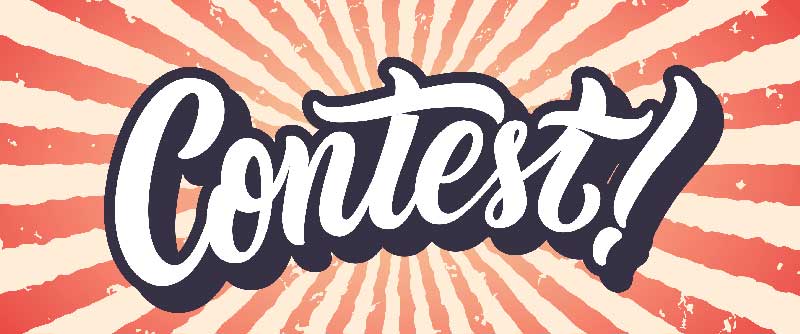
Contests are a powerful engagement tool on Instagram, generating 3.5 times more likes and 64 times more comments than regular posts.
Despite this, they’re regularly overlooked by brands, with only 2% of accounts hosting contests and a mere 0.6% of posts actually offering them in the first place. This means there’s a huge, relatively untapped resource for marketers to capitalize on.
How to run an Instagram contest requires planning, from partnering with another brand to increase reach and identifying contest rules and goals – for instance, ‘enter to win’, ‘like to win’ or ‘follow to win’ – to the creation of the attention-grabbing contest post.
Once ready to deploy, strategize the contest’s promotion; along with Instagram ads, think email blasts, website banners, social network plugs and more.
Monitoring the contest when it is up and running is also essential. Use hashtags, Google Alerts and social media management platforms to track your contest’s performance. Once it’s over, promote the results on your social networks.
Well-run Instagram contests like Mint’s get 64 times more comments than a typical branded post. Source: Mint.
14. Convert Instagram followers into email subscribers
Email remains the de facto channel for building truly deep customer relations. It’s why brands strive to convert Instagram followers into email subscribers via three established steps designed to create effective Instagram marketing for email.
First, create a clickable incentive in your Instagram posts depending on your target audience. For instance, consider offering a prize, free content, or a discount.
Second, once the audience clicks through, ensure the landing page features a strong call to action linked to an email submission form.
Third, create an email funnel to effectively develop your relationship with them.
15. Focus on user-generated content
User-generated content on Instagram is the holy grail for marketers. It’s a chance for followers to involve themselves more deeply with a brand while reducing marketing costs because content is being created and approved by your audience.
It’s an approach that has paid dividends for the best user-generated content campaigns.
16. Unlock the potential of Instagram Stories
With over 300 million people using Instagram Stories every day, it perhaps shouldn’t come as a surprise that one-third of the most viewed Instagram stories actually come from businesses.
Stories enable you to post a mix of photos and images in a single post that disappears after 24 hours. But their benefits can last much longer for your reach and engagement rates, pushing up your chances of appearing in the Explore section and helping you gain new followers in the process.
Critically, followers are automatically notified of any new prerecorded or live Stories. Live Stories are ideal for drawing people in because they’re happening in the moment, while prerecorded Stories are perfect for in-depth coverage of your products, one-time quick fire promotions, or sharing narratives.
17. Add a link to Instagram Stories

To open links in Instagram Stories, just swipe up from the bottom of the screen. Source: Instagram.
To add a link, you’ll need to upload your photo or video to Instagram as before. Next, you tap the link icon at the top of the screen. Type in the link, do a quick preview to check all is well and hit ‘done’.
18. Use emojis effectively
The power of images over words extends to emojis, especially on Instagram. Nearly 50% of comments or captions on the platform feature emojis.
Emojis are searchable.
With over 2,623 emojis available (and climbing), it is essential to create a strategy on how to use emojis that captures your brand without looking too informal.
First, consider if your brand should use emojis. As an example, if you in financial services or banking are they appropriate?
Second, check their meaning to make sure you use them in the right context to increase social media engagement.
Finally, remember emojis cut both ways. Monitor comments for emojis to use as sentiment indicators.
19. Promote your Instagram channel on other social accounts
Spread the word about your Instagram channel as far as possible. For instance, promote your Instagram account on Facebook by making an announcement on FB with a clickable link to your Instagram page.
You can also exploit Instagram’s auto-post and cross-promotional tools. The cross-promotional tools allow you to instantly post from Instagram to Facebook, Twitter, Tumblr and more, bringing followers together from across your social networks.
Remember not to cross-promote all your Instagram posts to other social channels or you risk ‘cannibalizing’ your content, negating the need for followers to visit your Instagram channel in the first place.
20. How to create a compelling call to action
Followers may love your Instagram ads, but be sure that all that love actually leads somewhere by using a powerful Instagram call to action.
While CTAs can be introduced into images or caption copy, the most direct way to increase interaction rates and push followers in a certain direction is to make use of the official CTA buttons that Instagram makes available to enterprise.
These appear below your post and are ideal for delivering short, punchy CTAs such as ‘Learn More’ and ‘Call Now’ that snare followers’ attention. For the best Instagram call to action examples and how to create them, head here.
21. Track and learn from your best-performing Instagram content
Learn the ‘formula’ of content that will drive up your Instagram engagement rates, using it to further hone your Instagram marketing strategy. There are many ways to do so, whether through identifying the most effective hashtags and visual styles or through learning when the best times are to post.
Through such monitoring, you can develop best practices for your own brand. Also, consider deploying a social media management platform see the section called social media tools. Social listening and analytics will help you finetune your marketing strategy and increase Instagram engagement.
How To Improve Social Media Engagement On Linkedin
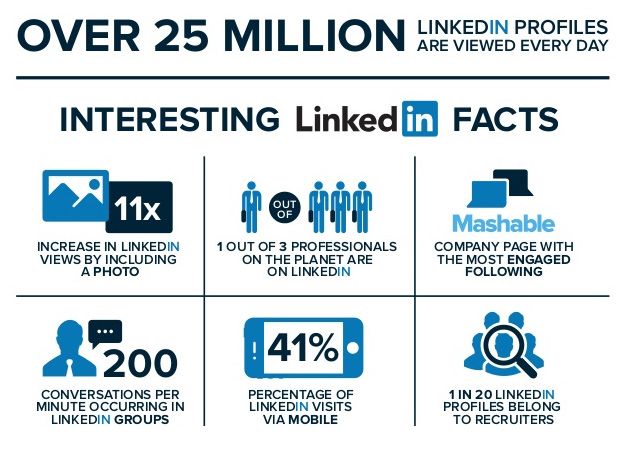
There are different ways to post and engage your audience on Linkedin. In this part of this post on social media engagment, I will guide you through the research, tactics and tools you can use to radically change how you engage your audience on Linkedin.
1. Posts and Articles – The Difference

Most people use posts and they will be the most popular place to share content with your audience. Articles are the alternative method of adding content to Linkedin.
So what’s the difference?
Posts
LinkedIn posts are similar to status updates on Facebook or tweets on Twitter.
Although shorter than Facebook updates (they can be up to 63,206 characters long), on Linkedin they are the shorter option. Posts, like Facebook updates and Tweets, appear in your timeline.
LinkedIn post character counts:
- LinkedIn posts: up to 1300 characters
- LinkedIn comments: up to 1250 characters
Articles
LinkedIn articles are similar to blog posts on your website.
Articles on LinkedIn can be much longer than posts:
- LinkedIn articles: up to 100,000 characters
2. Linkedin Demographics
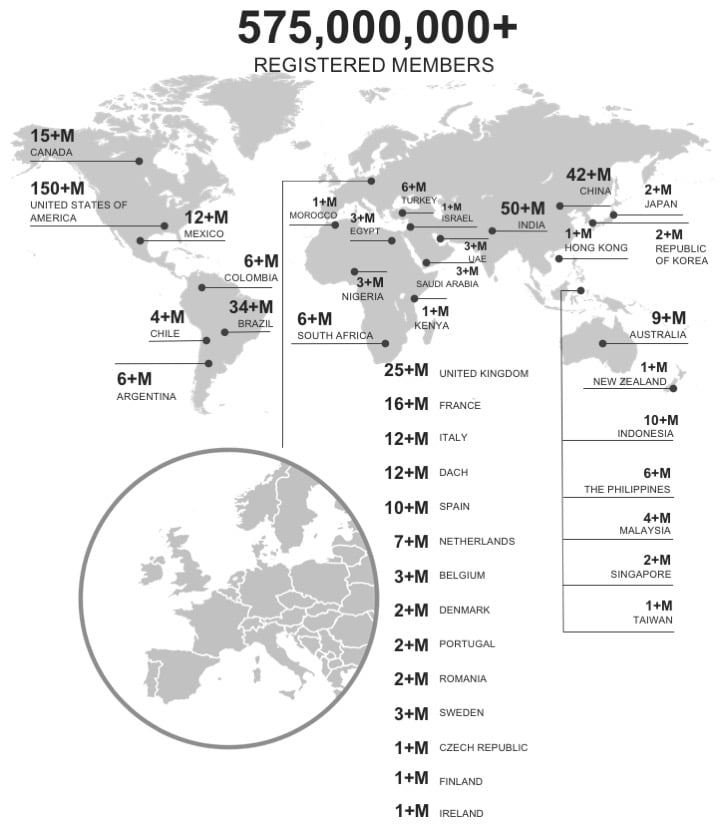
Of those LinkedIn users who are engaging with the platform monthly, 40% access it on a daily basis. However, LinkedIn is used sparingly, so you only have a few minutes to make an impact. Users only spend about 17 minutes on LinkedIn per month.
According to the Pew Research Center 2018 Social Media Use study, LinkedIn remains popular with college students. Further research into these LinkedIn statistics revealed that 50% of college graduates in the US are LinkedIn users, while the site engages with only 9% of people whose education doesn’t surpass high school.
Additionally, 44% of LinkedIn users take home more than $75,000 per year, which is above the national median in the US.
Although the US has the most LinkedIn users at 133 million, 70% of LinkedIn users are from outside of the US.
Along gender lines, LinkedIn is more popular with men, who comprise 57% of its users base. And, interestingly, millennials make up 38% of LinkedIn’s user base, with 11 million of the 87 million millennials in decision-making positions.
3. SEO – Research Your Keywords
Understand what topics and questions your audience is interested in. There are lots of different SEO tools you can use to do this.
Two of my favourite are Ahrefs and AnswerThePublic. Both of these tools allow you to explore the sort of questions your audience type into Google. Use this to creatively fuel your ideas for your posts.
4. Text vs. Image Posts
Posts tend to get much better engagement than articles.
LinkedIn doesn’t encourage posts with external links that take people away from the content. The obvious reason for this is that they lose out on advertising dollars.
The best-performing posts tend to be quite long up to the full 1300 characters and contain up to 8 images.
LinkedIn also allows you to include multimedia assets (YouTube, SlideShare, TED, Getty, Vimeo, or Lifestream are supported).
Unfortunately, the data indicates that the inclusion of multimedia assets are associated with fewer post views.
Write enough to trigger LinkedIn to display the ‘see more’ prompt.
5. Use emojis in LinkedIn posts
Emojis break p the visual blocks of text and add a little bit of emotion to your content. Used in the right way they can demonstrate some personality and add some humour.
Additionally, you can use them for bullet points and markers to draw attention to important points.
6. Use “How-to” and List-Style Headlines
A headline can make or break your Linkedin post.
Remember to optimise your headline use tools that I mention in my post on content marketing tools. You will find tools on how to optimise your headlines.
Headlines are often considered the most important part of a blog post. Websites like BuzzFeed and UpWorthy have built their business around crafting content with headlines that entice click-through. A good headline can make or break a post when you post on LinkedIn.
Here are some other ways to improve how you craft your headline:
- Poll your social media audience or email subscribers. You can easily set-up a poll with Survey AnyPlace or your survey program of choice. Simply list out several headline options and ask people to click the one they feel most compelled to read.
- Buy some AdWords ads and use different ad copy to see which one is clicked more.
- When you write a post, publish with one headline, and Tweet the post with varying headlines along with different unique Bitly links. Then edit your post headline to use the version that had the greatest click-through rate.
Don’t write Question Posts—LinkedIn posts where the headline poses a question perform poorly.
7. Like your own LinkedIn posts and comments
Linkedin like other social media platfoms works on algorithms that measure engagement. Liking your own content gives your post it’s first push and marker.
In psychology research has shown that people like social proof. So the more people that like a post, the more chance there is of it being liked. It becomes a snowball effect.
People like to share things that look popular.
As soon as you post on LinkedIn, hit the Like button. Additionally, when someone comments like that.
Add a call to action at the end (or beginning of your post), to encourage people to click the thumbs up and like the post is a very effective way of gaining more views and shares.
8. Share and embed your own LinkedIn posts
Share your Linkedin post across your other social media platforms. This is a good tactic to increase your social media engagement on LinkedIn.
You can also embed your LinkedIn posts on your website or blog. As an example, if you have written a series of Linkedin posts on a topic, you can summarise them on a blog post.
9. Be Positive or Neutral
Posts that are written in language reflecting a positive sentiment get the most LinkedIn shares and likes.
However, neutral language posts tend to see more comments and post views than both positive and negative sentiments.
10. An 11-year-old should understand your content
The Flesch-Kincaid Reading Ease test is a measure of how easy it is to understand a piece of text.
For your own personal blog, e.g. WordPress, and for Linkedin posts, you should be aiming for a score of 60.
You can also use this formula: Multiply the average sentence length by 1.015. Multiply the average word length by 84.6. Add the two numbers. Subtract this sum from 206.835. The balance is your readability score.
The minimum score for Plain English is 60, or about 20 words per sentence and 11/2 syllables per word. Conversational English for consumers should score at least 80, or about 15 words per sentence and 1 1/2 syllables per word.
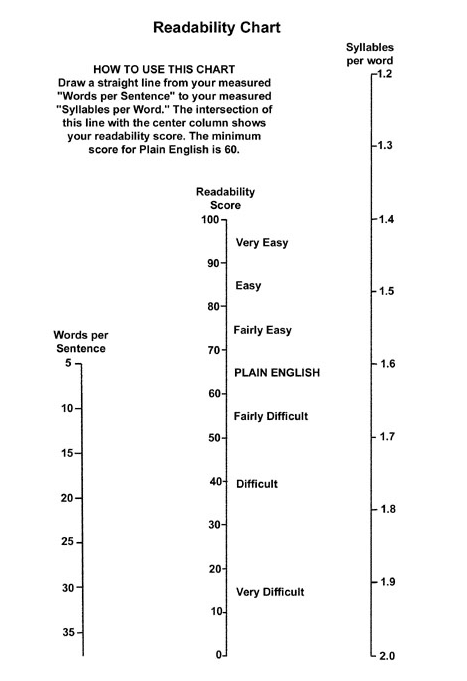
11. Comment on other people’s posts
If you use Linkedin purely as a broadcast channel you are unlikely to build relationships and get reciprocal comments.
Commenting is a very targeted way to build relationships with influencers, potential customers as well as to improve your own social media engagement.
- Write at least a couple of lines.
- Use spacing between paragraphs (use a double return on desktop).
- Add something that enhances the existing discussion, not that sidetracks debate.
- Tag others only if the post is highly relevant to them.
- Avoid links unless the content is highly relevant and there’s no space to explain it in the comment (which can be up to 1250 characters).
12. Linkedin Video
Linkedin Native videos – is a video uploaded directly in the LinkedIn app or via the browser version of LinkedIn.
If you share video on LinkedIn, upload it directly to LinkedIn instead of using a link to YouTube or another video source.
LinkedIn native video details:
- Maximum length: 10 minutes
- Maximum file size: 5GB
- Maximum resolution:
3840×2160pixels (4K)
LinkedIn supports the addition of captions to your native videos.
When you upload a video to LinkedIn, look for the pen icon in the top-right corner. This lets you add captions.
Square videos take up 78% more screen space than landscape videos do.
The square (1:1) format therefore gives you the best chance of catching people’s attention, especially on mobile devices. Buffer describes square video as having more ‘thumb-stopping power’.
Remember that a lot of people use LinkedIn in offices, and that means they often have the sound turned off. Your videos may be more useful to them – and to those with hearing impairment – if you include captions (subtitles).
Here are mobile apps that can add automatically caption your videos as you speak:
- Clips (free)
- Clipomatic (£4.99)
- AutoCap (£1.49 per video to remove watermark)
13. What is the best time to post?
Post at a time when most of your followers are online.
Usually early morning is good when people check their phones and before they get caught up in their working day.
Bear in mind who and where your audience is. If you have a lot of followers and connections in the USA vs. the UK for instance.
Posts at other times can occasionally do well, so don’t assume that your ideal time is the only slot in which to post. I’ve had posts do well in the evenings and on weekends.
Generally, posting earlier in your day will usually work best.
14: When to engage your audience?
The main types of post engagement are likes and comments. Like all social media posts have a ‘half-life’. In other words, the engagement rates tail off exponentially after a point as people move on to other posts in their feeds.
The first hour after posting is particularly important for the organic reach of your post.
If you post early morning – try to schedule your time so you have time in the hour following your post to comment and respond to people.
Extend the social media engagement by responding to some comments later.
15. How often to post on social media?
If you post too often, you might find that some people do not like your hitting their stream too much.
A recommended post frequency is once per day. However, you need to consider the quality vs. quantity rule here.
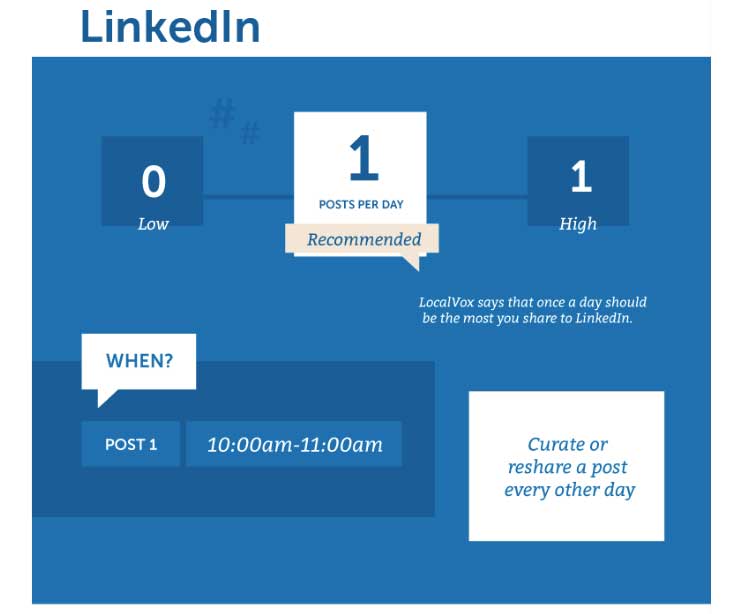
It is always better to post a high-value, relevant piece of content that solves problems, than lots of posts that are hollow in content.
Remember unless you add value then you risk someone clicking the Unfollow button.
16. Include a hashtag on every post
Hashtags serve lots of different functions in social media.
First of all, they help people identify topics easily and then follow trends and news within that topic.
Secondly, they create a unique identification for your own brand. In other words, if you have your own branded hashtag you can gauge how people are interacting with your content.
So don’t just use popular hashtags. Think about developing your own custom branded hashtag.
17. Tagging Influencers
On blogs, you might sometimes across posts that have responses from influencers on a topic. As an example, you might have a blog called Top Upcoming Trends By Tech Experts.
The strategy behind a blog post of this sort is to get comments/ quotes from top influencers, produce a blog post and then get them to share it as well.
With Linkedin you can reference others work, posts or blogs within a post (remember no outbound links). In stead of links to their content you can tag them in the post to give them the heads up them you have appreciated their content and used it for your audience.
How to tag a LinkedIn user in a post
- Type the @ symbol.
- Start typing the name of the person you want to tag in your post.
A dropdown menu of people appears. If it doesn’t, try typing a comma (,) after the name.
- Tap the person’s name in the menu and it should appear in the post with a light blue background.
Tagging can be a frustrating process and you might need to try it a couple of times before it works.
Summary of Social Media Engagement Guide
You have a heap of ideas and tips to explore here.
Try to focus first on your goals and then relate these pick the right strategies, content and channel(s) to reach and engage your audience.
- Research:
- your audience – the topics they are interested and adjacent topics.
- pains that they feel and go through.
- hashtags they use and your industry uses.
- types of content that receive the highest levels of social media engagement
- Create your social media plan.
- Schedule your time for social media in your diary.
- creating content
- scheduling posts
- responding, retweeting others content.
- review of analytics and subsequent actions to improve.
- Book time in your diary to be creative – to think of new ideas – the best ideas don’t come in front of a screen.
If you have any tips on what social media engagement tactics have worked for you then let me know.
